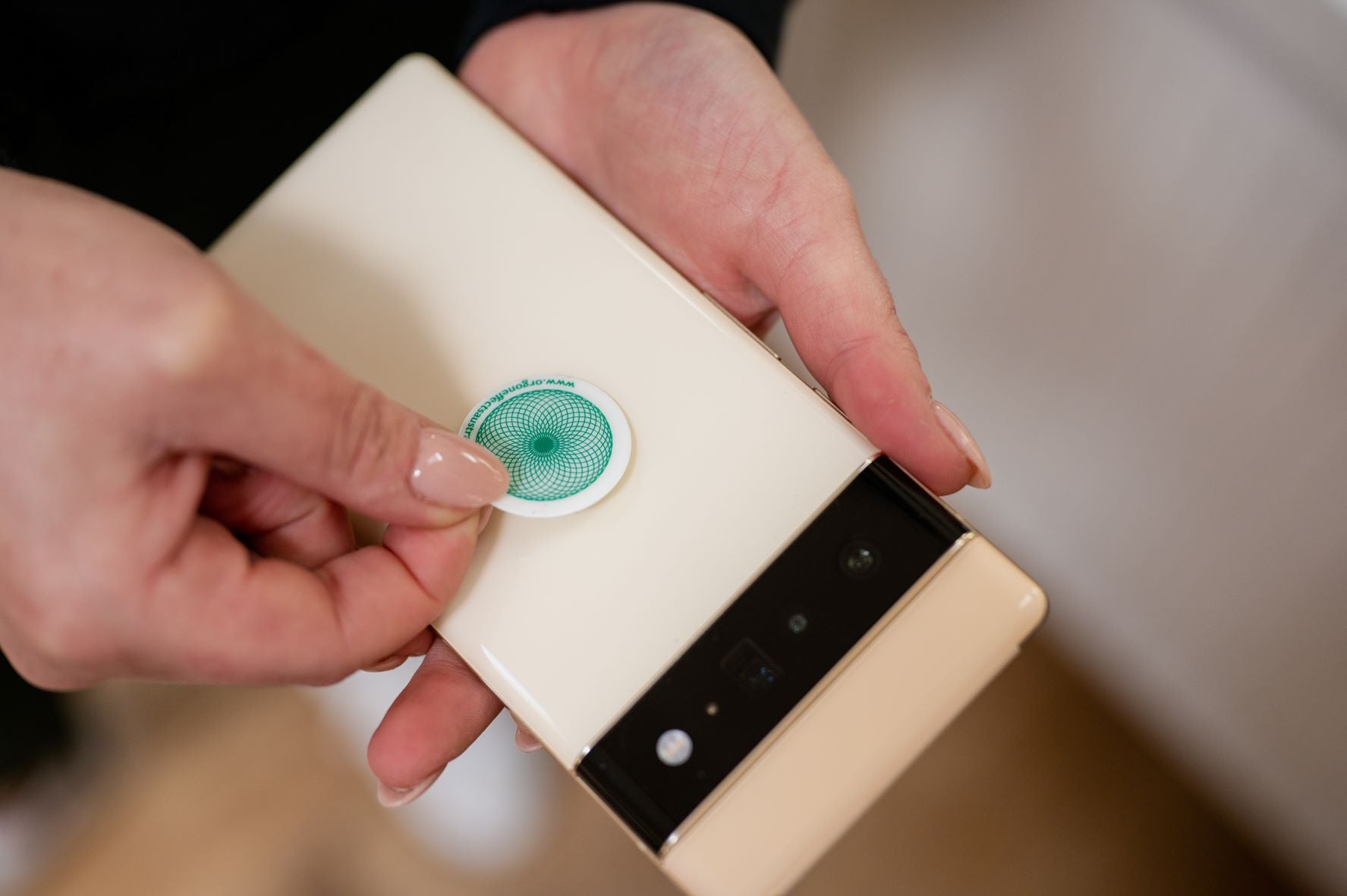Are Bluetooth headphones safe? Bluetooth headphones are becoming an extremely popular choice among casual and active listeners. After all, most of us appreciate compact devices that easily slip into our pants pockets. But does your comfort have a price?
Bluetooth has become a standard of today's technology. We are always on the go, and don't want to be held back by wired technology. However, Should you be concerned about your physical health before deciding to try a pair yourself?
If you are curious about the potential health risks associated with daily listening, you should consider the latest scientific evidence on the subject. Read on to learn more about some of the most popular myths and whether or not they are based on reality!
What are Bluetooth Headphones and How Do They Work?

Technology is continually evolving, which means that more and more devices and products are going wireless, including headphones. Interest in Bluetooth headphones has grown even more with the recent launch of Apple’s AirPods.
While the aesthetic is great, the “freedom” is practical, we are afraid more people are not questioning its safety. The reason for this is because of how Bluetooth headphones work.
The Bluetooth headphones work with wireless technology. This means that headphones do not connect audio signals via wires or cables, but rather transmit them via radio signals.
If you open a pair of Bluetooth headphones, you will find a small computer chip that contains software for connecting and pairing two devices. When paired with a device successfully (typically a phone), Bluetooth technology allows data to be exchanged over short distances.
For this reason, you can only stay a certain distance from the paired device, depending on how far radiofrequency waves can travel.
We fully understand its appeal: you can move freely while exercising or doing housework without annoying cables. They are also said to offer superior sound quality than traditional wired headphones, a feature that is particularly attractive to gamers. But it’s important to ask ourselves: is it worth it?
If you didn’t already know, Bluetooth headphones emit non-ionizing radiation. Let’s take a closer look...
How Bluetooth Headphones Emit Radiation

There is absolutely no debate as to whether Bluetooth headphones emit radiation.
If you read your product manual, you can find an FCC disclaimer and possibly the frequencies they operate on. It is controversial whether this radiation is harmful to the body or not.
Many research suggests that Bluetooth products emit electromagnetic fields (EMF), the radiation of which can cause health problems. This is because Bluetooth technology emits non-ionizing electromagnetic fields in the high-frequency range. This frequency range is the same as that of mobile phones.
However, the radiation is less than that of cell phones, because the paired devices only communicate within a few meters of each other, unlike a cell phone tower that sits miles away. But the frequencies are similar, and it is the frequencies themselves that are increasingly being studied as harmful to the human body.
One reason why we are especially concerned about headphones is that they literally sit on or into your ears. This means that any emitted radiation has a direct route to your brain tissue.
Not just that, but mostly when people wear headphones, they do it for hours. Therefore, the exposure is not only very close but continues for a long period.
Are Bluetooth Headphones Safe?

Bluetooth headphones were first introduced to allow you to continue your conversations without the distraction of a phone in hand.
Bluetooth headphones are essentially a wireless extension of your mobile phone. Bluetooth and cell phones emit radiation levels that some believe are dangerous and can cause cancer as well as a host of other problems.
As earlier stated, Bluetooth generally works at lower intensities than cellular signals. In fact, one 2019 study found that bluetooth emits radiation that is 10 to 400 times lower than your cellphone.
However, Bluetooth headphones are designed to be worn in the ear close to the head for a long time. This extends the contact time of EMF radiation with your brain and head tissues.
Your head is a perfect antenna because it’s filled with salty fluid and conductive soft tissue. Your cells communicate using electrochemical signals that external EMFs can interrupt.
What is Brain Flow Disruption?

So, with all this brain flow disruption, what does it mean? According to Dr. Andrew Goldsworthy, a leading researcher and physician on the biological effects of radiation, it may mean an increased risk of tinnitus, depression, headaches, ADHD, and cancer.
Let’s take a closer look at the relationship between using Bluetooth headphones and cancer/tumor.
“Short wavelengths and the rapid rise and fall of pulses given off by cell phones and Bluetooth can damage human cells by suppressing the transmission of calcium ions, leading to the leakage of ion channels. The destruction of cells can lead to irreparable damage to DNA, which can increase the risk of cancer."
Dr. Goldsworthy has also linked excessive exposure to electromagnetic fields with ADHD (Attention Deficit Hyperactivity Disorder) through identical mechanisms.
Electromagnetic fields are believed to cause unintentional calcium leakage from cells, making them too sensitive and more prone to transmit false signals. This can interfere with normal mental activity, trigger random thoughts, and contribute to the loss of concentration typical of ADHD patients. Children are at special risk because their brains are in the developmental stage.
On a popular internet community forum - Reddit, users posted threads describing headphone headaches. Other forums have users reporting similar symptoms themselves.
Recently, Dr. Martin Pall of Washington State University published an article in the Journal of Neuroanatomy in September 2016 to summarize recent research on the neuropsychiatric effects of electromagnetic radiation, including those related to headaches and depression. He basically describes the mechanism of action of EMFs and cites numerous reports. Some of the observations he made are:
- Electromagnetic fields have been shown to activate voltage-gated calcium ion channels (VGCCs) in the brain and that these channels are responsible for neuronal communication.
- Animal studies have shown that low exposure has a wide range of effects.
- Genetic studies have shown that VCGG causes extensive neuropsychiatric effects.
In a review of more than 165 clinically relevant studies, a Brazilian study found that radiation from cell phones can trigger the worsening or onset of tinnitus. Tinnitus is the perception of sounds or buzzing in the ears and affects up to 20 percent of the population. Tinnitus is not a disease in itself, but an underlying condition that may be related to circulatory problems, ear injuries, or age-related hearing loss according to the Mayo Clinic.
Are Bluetooth Headphones Bad for Your Brain?

According to rfsafe.com, “Brain tumors are the leading killer of children today, and the rate of adults developing brain tumors on the same side of the head where the phone is held is now calling into question cell phone radiation safety. If those assumptions are correct and mobile phone radiation is dangerous and even fatal, we could face a cancer epidemic among 30 to 40-year-olds in the future due to the explosive growth in smartphone use among adolescents."
A recent article in The Atlantic sparked a public debate about the correlation between cell phones and other wireless technologies like Bluetooth headphones and brain tumors.
The brain cancer diagnosis of Senator John McCain has the potential to rekindle a complex and persistent question about the safety of wireless technologies, such as cell phones that emit EMF radiation.
For example, a study found that people with the highest levels of cell phone use, about 30 minutes a day for 10 years, had a 40% risk of glioma compared to those who less frequently used their cell phones.
One might reasonably expect politicians, for example, to be at the higher end of the cell spectrum.
Protect Yourself From Radiation from Bluetooth Headphones

The good news is there are many products can help you stay radiation-free and hands-free simultaneously.
Based on extensive studies and research, it is clear that there is a link between Bluetooth radiation and an increased risk of brain tumors. Despite this, some experts believe we will not see the full effects of all this modern technology for decades.
With this in mind, we have to change our daily habits and the way we communicate now. There is no time to wait.
CNN’s chief medical correspondent Dr. Sanjay Gupta is sticking with wired headphones for good reason.
“It might be quite early to say for sure. The time or latency between exposure and detection of a tumor is about 20 years, often longer. The European Environment Agency (EEA) has said that cell phones could pose a significant health risk just like leaded gasoline, asbestos and smoking,” said Dr. Sanjay Gupta.
In the same article, the doctor says he chooses to send more text messages and emails to avoid unnecessary radiation.
Check out: Protect yourself from Bluetooth or Wired Headset Radiation
Is Sleeping With Bluetooth Headphones Safe?
Teenagers in particular, but often adults too often fall asleep with Bluetooth headphones on.
Falling asleep with a Bluetooth headset is especially harmful because RF radiation disrupts normal brain wave function and prevents you from entering deeper REM sleep. As a result, your body cannot rest or perform remote healing as it would otherwise. Also, with Bluetooth headphones, this RF radiation, which has been linked to things like brain tumors, cancer, DNA damage, and infertility, is released directly to the brain.
Microwave radiation is radiofrequency radiation. And Bluetooth even employs the same frequency as a microwave oven. Obviously, the wattage is different, but the radiation is identical. Is it bad to put a mini microwave in your ear? Yes, please. Several peer-reviewed scientific studies are linking radiofrequency radiation to a range of health diseases and problems. Cancer is the most frequently cited. Also, there are things like male infertility (particularly in fetuses in the first 100 days of conception), for instance.
For more information check out Is it Safe to Sleep with Bluetooth Headphones In?
Are Bluetooth Headphones Safer than Wired?

Definitely yes, but there is one caveat. Wired headphones are considered to be much safer because they do not have to use radio frequencies to function and therefore do not emit any radiation. They work simply by plugging the cable directly into the phone. The sound waves are then carried from your phone to the headphones, where the waves are transformed into the sound you can hear.
Simple truth? Well, it turns out that even with traditional headphones, there may be some flaws.
Remember that wired headsets use metal cables as conductors for audio signals. These metals can be useful for sending sound signals to your ears, but they also serve as conductors (because metal is a conductor).
Although the headsets themselves do not emit radio frequency, they transmit the radio frequency from your cell phone to your ear. This is true unless your mobile phone is in airplane mode.
Making a clear comparison can help you understand and decide what type of phone accessory you should have. A Bluetooth headphone connected to your ear emits high-intensity radiation, and the chances of it not getting into your ear are very small or negligible.
However, wired headphones will reduce the exposure of the ear and brain to harmful radiation by keeping the phone away from the body. The further you move it from your body, the lesser your exposure will be.
A Bluetooth headphone transmits radiation directly to the ears, while a wired headset emits radiation through a cable, but it’s much smaller and weaker than wireless headsets.
Bluetooth headphones can cause DNA damage, cell breakdown, depression, headaches, and hearing loss. While wired headphones may not cause the above issues if used sensibly.
It would be really wrong to criticize the invention of Bluetooth headphones completely because they also have many advantages that are behind their growing popularity. Check out some benefits that are driving customers to prefer wired headphones.
- Bluetooth headphones allow users to move freely within 10 meters of the device.
- Chords are more awkward as they often get caught in your long hair or things you keep where you use them, and often the two form knots that are difficult to open. You can definitely prevent the above situations by purchasing wireless headphones.
- The sound quality of the Bluetooth headsets is much better and you have fun listening to your music and you can also listen carefully to your boss’ instructions when you are away from the office.
In this day and age, we can’t ban the use of headphones and cell phones, but studies say limited and sensible use of either can save you from being billed by doctors.
How Can you Protect Yourself from Bluetooth Radiation?
One thing that makes Bluetooth headphones or earphones particularly dangerous is that we put them into a hole in our heads. That’s right, our ears.
There is therefore only soft tissue between our brain and this source of microwave radiation. A wired headset (alone) isn’t much better.
The radiofrequency radiation from your cell phone goes straight through the corded headphone like an antenna into your ear. A cell phone gives off radiofrequency radiation at a frequency of 2.4 GHz, which is also microwave radiation.
Microwaves are radio waves with frequencies around 1 GHz to 300 GHz. And in this region of the electromagnetic spectrum, the following applies: higher frequency means more dangerous radiofrequency radiation for living organisms. Holding a cell phone to your ear is likewise bad. So what can be done?
Air Tube Earphones
One of the easiest ways to protect yourself from Bluetooth radiation is to use an “air tube headphone” with a ferrite bead at the lower end of the cable, right next to the cell phone. (And it’s important to keep as much distance as you can between your cell phone and your body.)
An air tube headphone works just like a stethoscope. You get impressive sound, but no cables going to your head. The reason you need to have a ferrite bead at the lower end of the cable is that the radiofrequency radiation continues to travel through the cable of an air tube headphone until the air tubes begin.
The cord is an antenna for radiofrequency radiation and sends radiation out to anywhere on the body that it touches. But a ferrite bead creates a magnetic field that absorbs all the radiofrequency radiation that travels through the wire. Approximately 95% of the radiofrequency radiation is absorbed. So if you place a ferrite bead on the part of the cable that is closest to your cell phone, the headphone will be very secure.
Air tube headsets are a smart alternative to other headsets because they provide a relaxing sensation. Besides listening through speakers, they are probably the safest way to listen to sound because they remove electromagnetic radiation completely from your head.
Of course, you can always leave the headphones completely off and use speakers. Just ensure you have wired speakers, or if it is a Bluetooth speaker, keep the paired device and speaker away from your body.
Ferrite Bead

Some people believe that an Air Tube headphone is too clunky and heavy. If so, another method to protect yourself from Bluetooth radiation is to use your regular wired headphones with a ferrite bead on the cable, just as you would with air tube headphones.
Some of the radiofrequency radiation will still reach your ear, but it will be minimized by up to 95 percent. Often, computer manufacturers place a ferrite bead on the cables we use to charge our laptops.
They do this to prevent radiofrequency surges and spikes from kinking the cable and damaging your laptop. The same technology prevents most radiofrequency radiation from passing through your mobile phone cord and into the ear.
This is not a new technology. It is used in several applications of all sizes in the electronics industry. It is a great protection that we can use against radiofrequency radiation from mobile phones.
Phone Computer Bluetooth Wi-Fi Radiation Protection
This highly protective Phone Radiation EMF Protection now even combats electromagnetic radiation (EMR) which comes off the digital screens of cell phones which is known to cause dizziness, nausea, migraines, headaches, and hair loss. This highly effective Phone Radiation EMF Protection provides you and your loved ones with maximum radiation protection, while at the same time preventing the ill effects of DNA damage and the formulation of brain tumors, and works in a far superior way to any shield can.
These powerful Phone Radiation EMF Protectors are designed to eliminate radiation emissions by harmonizing and neutralizing the effects of this harmful energy, rather than shielding or blocking them, these create a healthy life-force chi by constantly generating beneficial healthy Negative Ions.
Our opinion is that we should use both types of products. We think it is important to prevent as much RF radiation from reaching our bodies as possible. And since we know that some Bluetooth RF radiation will still reach us, we need to use products that reduce the damage of RF radiation. Both approaches are essential.
Steel Mesh Bucket Protection
What? A steel mesh bucket? “This is a typical reaction when this topic is brought up!” However, it is scientifically known that radiofrequency radiation given off by Bluetooth devices and mobile phones has difficulty penetrating conductive metal’s parallel lines. Radiofrequency radiation differs from gamma rays or X-rays, where a lead barrier is needed to block the radiation.
Most of us now use our cell phones as an alarm clock. And our mobile phones are replacing analog landlines every day. In our modern world, therefore, it isn’t practical to turn off our mobile phones at night or put them in airplane mode. We need to be able to receive calls and sound alarms from our phones.
The steel mesh baskets or buckets will block up to 95 percent of the radiofrequency radiation given off by your Bluetooth devices and cell phones. You should place the basket higher than your body when you sleep and should be about 4-6 feet away from you while you sleep. They’re also useful for placing Bluetooth devices like Echos, Alexa, and baby monitors when you have them.
Final Thoughts
While Bluetooth headphones are convenient and popular, the truth is that they are not safe. Bluetooth headsets are potential sources of electromagnetic radiation that can lead to discomfort and even certain ailments over a long time. The biggest problem is that they are used so close to your brain and for long periods.






